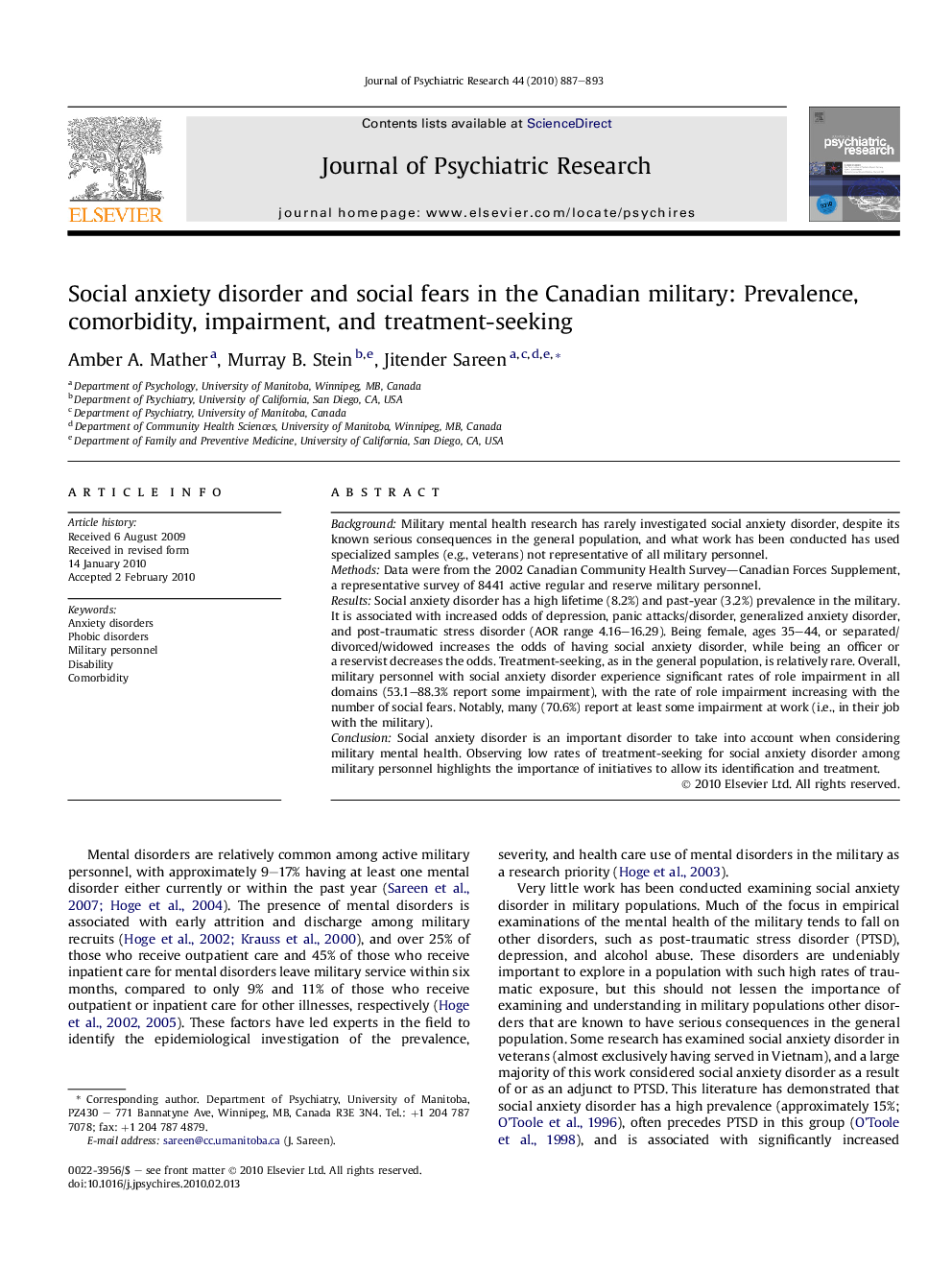| Article ID | Journal | Published Year | Pages | File Type |
|---|---|---|---|---|
| 327758 | Journal of Psychiatric Research | 2010 | 7 Pages |
BackgroundMilitary mental health research has rarely investigated social anxiety disorder, despite its known serious consequences in the general population, and what work has been conducted has used specialized samples (e.g., veterans) not representative of all military personnel.MethodsData were from the 2002 Canadian Community Health Survey—Canadian Forces Supplement, a representative survey of 8441 active regular and reserve military personnel.ResultsSocial anxiety disorder has a high lifetime (8.2%) and past-year (3.2%) prevalence in the military. It is associated with increased odds of depression, panic attacks/disorder, generalized anxiety disorder, and post-traumatic stress disorder (AOR range 4.16–16.29). Being female, ages 35–44, or separated/divorced/widowed increases the odds of having social anxiety disorder, while being an officer or a reservist decreases the odds. Treatment-seeking, as in the general population, is relatively rare. Overall, military personnel with social anxiety disorder experience significant rates of role impairment in all domains (53.1–88.3% report some impairment), with the rate of role impairment increasing with the number of social fears. Notably, many (70.6%) report at least some impairment at work (i.e., in their job with the military).ConclusionSocial anxiety disorder is an important disorder to take into account when considering military mental health. Observing low rates of treatment-seeking for social anxiety disorder among military personnel highlights the importance of initiatives to allow its identification and treatment.
